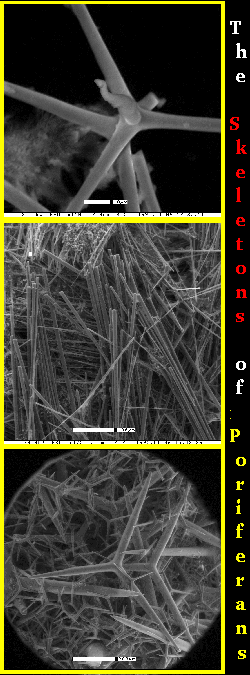
|
Sponges, like all animals, possess some sort of a skeleton that gives their
bodies shape.
As a whole, poriferans have diverse skeletal elements including calcareous laminae,
organic filaments, and siliceous and calcareous spicules.
The skeletons of each of the major poriferan
groups are distinctive and have been used to
reconstruct their evolutionary relationships.
Spicules come in an array of
beautiful shapes, as seen in the SEM images to the left.
These images were obtained using
UCMP's
Enivronmental Scanning Electron Microscope.
Spicules are often categorized by size, the larger being megascleres and the smaller
microscleres.
Some spicules are formed of the mineralized
substances calcium carbonate and silica, while others are made of an
organic substance called spongin. Spongin skeletons were and are used as
scrubbers in bathtubs, though they are fairly expensive.
The ubiquitous bathtub accessory called a lufa is NOT a sponge, but a plant.
The mineralized forms are considerably more hard and are not as frequently
used for commercial purposes.
Zip Over to:
|











